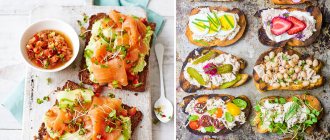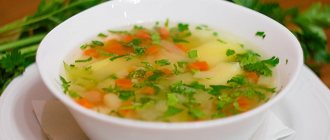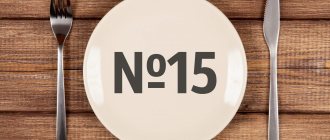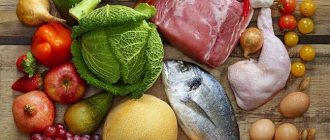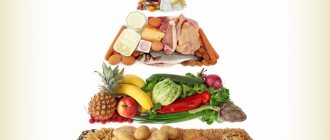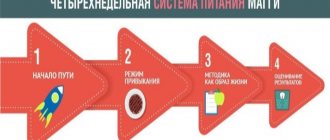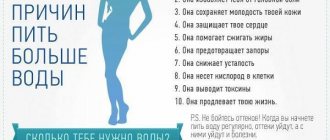Heart Diet No. 10: Do's and Don'ts?
Authorized products:
- Rosehip decoction, vegetable and fruit juices, compotes, coffee drinks, weak tea. Grape juice in limited quantities.
- Yesterday's baked wheat bread (first- or second-grade flour), sponge cakes and savory cookies, salt-free dietary bread.
- Vegetable oils, unsalted butter.
- Chicken, rabbit, pork, veal, lean beef. Jellied, boiled lean fish. It is necessary to limit the consumption of boiled sausages.
- One egg per day – added to a dish or soft-boiled.
- Various vegetarian soups with vegetables and cereals. A serving is approximately 250-400 grams.
- Vegetables raw, baked or boiled: cucumbers, lettuce, tomatoes, carrots, potatoes. Limited – green peas and white cabbage. You can add parsley, dill, and green onions to dishes.
- Curd dishes and cottage cheese, fermented milk drinks. If well tolerated, use milk.
- Candies without chocolate, jam, milk creams and jelly, mousses.
- Boiled pasta.
Prohibited:
- Puff pastry and pastry products, fresh bread.
- Strong mushroom, fish and meat broths.
- Fatty fish and meat. Kidneys, liver, goose, duck.
- Canned fish and meat, sausages, smoked meats, fatty and salty cheeses.
- Fried and hard-boiled eggs.
- Mushrooms, legumes.
- Pickled, pickled and salted vegetables.
- Garlic, onions, radishes, radishes, spinach, sorrel.
- Fruits containing coarse fiber.
- Cocoa, chocolate, natural coffee.
- Cooking and meat fats.
Doctor's opinion
Diet 10 was developed as a complex of therapeutic nutrition techniques for various groups of pathological conditions by therapist Pevzner. It has a physiological basis for the choice of permitted food products, as well as the mode of their intake. By reducing the amount of salt and free liquid in the diet, it is possible to significantly reduce the load on the heart and blood vessels and speed up the healing process. Dietary recommendations are usually prescribed by the attending physician already in a medical hospital. After the patient is discharged, it is recommended to continue using table 10 at home. This will improve the condition of the cardiovascular system, as well as the entire body as a whole, and also prevent re-exacerbation of pathological processes.
Diet menu No. 10 for one day
An approximate daily ration of diet table number ten could be as follows: first breakfast - oatmeal milk porridge, soft-boiled egg, tea. Second breakfast – apples with sugar (baked). Lunch – pearl barley soup with vegetables (about half a serving), dried fruit compote, carrot puree with boiled meat. During the afternoon snack, you can drink a rosehip decoction. Dinner – boiled potatoes with boiled fish, curd pudding (half portion), tea. Before going to bed, drink kefir. Salt is not used in cooking.
Contraindications
Limiting the use of diet 10 is a necessary measure in the presence of the following medical contraindications:
- Acute pathology of the digestive system, requiring the use of a gentle diet.
- The presence of concomitant pathology in the body, leading to its depletion and requiring an increase in the energy value of the diet (severe acute or chronic infectious, somatic, endocrine pathology).
- Hypersensitivity or allergic reactions to most food products that form the basis of dietary table 10 according to Pevzner.
If there are contraindications, the attending physician usually corrects the list of permitted and prohibited products, as well as the regimen for taking them.
Diet recipes No. 10
Boiled meat soufflé.
Ingredients: 5 ml sunflower oil, 1 egg, 5 g flour, 30 ml milk, 50 g boiled beef. Turn the meat through a meat grinder two or three times. Prepare a white sauce from dried flour and milk and, stirring thoroughly, add in small portions to the minced meat. Separate the egg white from the yolk. Add the yolk to the puree, add salt and stir. Beat the protein into a thick foam, gradually add it to the meat puree. Place the prepared mixture in a frying pan greased with vegetable oil and steam the soufflé. Before serving, pour oil over the dish.
Steamed meatloaf stuffed with omelette.
Ingredients: 5 ml vegetable oil, 10 ml milk, 1 egg, 20 ml water, 15 g wheat bread, 75 g beef. Rinse the beef and with bread soaked in water, pass through a meat grinder twice, stir thoroughly and beat. Spread the prepared mixture in a thin layer on a cloth moistened with water. Place a chilled omelette made from eggs and milk in the middle. Transfer the rolled roll from the cloth onto a baking sheet moistened with water and steam. Drizzle with vegetable oil before serving.
Boiled meat with vegetable stew.
Ingredients: 5 ml of vegetable oil, 85 ml of vegetable broth, 5 g of flour, 15 g of tomato, 20 g of green peas, 50 g of potatoes, 30 g of carrots, 5 g of parsley root, 10 g of onions, 50 g of boiled beef. Cut the beef into pieces. Finely chop the carrots, parsley root and onion and simmer in water with vegetable oil (a little water). Cut the potatoes into cubes, add finely chopped tomatoes, green peas, stewed vegetables and meat. Pour the sauce prepared from vegetable broth and dried flour, simmer the dish until cooked.
Author of the article:
Kuzmina Vera Valerievna |
Endocrinologist, nutritionist Education: Diploma of the Russian State Medical University named after. N.I. Pirogov, specialty “General Medicine” (2004). Residency at the Moscow State Medical and Dental University, diploma in Endocrinology (2006). Our authors
Main characteristics of the diet
The main goal of diet 10 is to reduce the functional load on the heart and blood vessels, as a result of which their condition improves. It has several of the following distinctive characteristics:
- A slight reduction in calorie intake by reducing the content of carbohydrates and fats, mainly of animal origin.
- Significant limitation of the intake of table salt and liquid into the body.
- Reducing the content of organic compounds in the diet, which have an irritating effect on the cardiovascular, nervous system, gastrointestinal tract, leads to bloating (flatulence).
- Increasing the level of lipotropic substances (cottage cheese components) in the diet, which have a beneficial effect on the liver and heart.
- An increase in the amount of magnesium and potassium ions necessary for the normal course of electrophysiological processes in the heart and blood vessels, as well as compounds with alkalizing properties (foods of plant origin).
- Culinary processing includes moderate mechanical grinding; it is recommended to boil, steam, and stew dishes with virtually no added salt. Avoid fried and hard-to-digest foods.
In terms of chemical composition, energy value, as well as the ratio of the main classes of organic compounds, diet 10 includes the following distinctive indicators:
- Proteins – 90 g, of which 55-60% are of animal origin, as they contain essential amino acids.
- Carbohydrates – 350-400 g.
- Fats – 70 g, of which 25-30% are of vegetable origin.
- Table salt (sodium chloride) – 6-7 g.
- Free liquid – 1.2 l.
- Energy value – 2500-2600 kcal.
The diet is 5 times a day in almost identical small portions, which makes it possible to significantly reduce the load on the digestive system.
Advice for women and men
The bodies of men and women have different standards for the consumption of nutrients. This is due to different hormonal status, weight and height ratio. Tips for men:
- Hypertensive men need a lot of protein. Their diet is dominated by meat and dairy products. The most protein compounds are found in poultry, beef, nuts, and cottage cheese.
- Men are more likely than women to suffer from cardiovascular diseases. After 40 years, you should regularly monitor your blood cholesterol levels in order to pay attention to your diet in time.
- B vitamins must be present in the foods consumed. They improve blood composition and have a beneficial effect on blood circulation in general.
- Vitamin C strengthens blood vessels and makes them elastic. Vitamin therapy is included in preventive measures for a hypocholesterol diet.
Advice for women:
- When drawing up a weekly diet, it is important to pay attention to the protein/fat/carbohydrate ratio.
- Recipes should be varied, which minimizes the possibility of failure.
- Women's menus should be enriched with fruit acids, focusing on the consumption of fresh fruits.
In both cases, you need to drink a glass of purified water before eating. This promotes proper digestion. You should avoid sweet pastries, cocoa, and coffee.
Nutrition for a hypocholesterol diet
Most of the cholesterol is produced by the body itself for the functioning of vital processes. Sometimes its laboratory value increases significantly. This leads to deterioration of the blood vessels and excess weight gain. In this case, you should carefully monitor your diet, observing “table No. 10”. This is a low-carbohydrate diet aimed at providing the body with all the necessary vitamins and microelements.
Table No. 10 includes products of plant and animal origin:
- Lean meats provide the body with protein and proper carbohydrates. Fats in small quantities are necessary to maintain human life.
- Vegetables are rich in vitamins and nutrients. With their help, metabolism is accelerated and metabolism is improved.
- Fruits contain acids necessary for the absorption of vitamins.
- Fermented milk products provide the body with calcium.
- Vitamin drinks (for example, rosehip decoction) serve as a source of vitamins and increase the body's immune defense.
- Vegetable oils are a source of fats that do not affect the condition of the heart and blood vessels.
All dishes are prepared by boiling, steaming or stewing. The diet includes a high content of vitamins B and C, microelements (calcium, potassium, magnesium). When serving, the temperature of the dish can be any. This indicator has nothing to do with the formation of cholesterol.
Pain in the heart area makes almost every person worry, because the first thing that comes to mind is serious life-threatening pathologies. However, among the causes of chest pain when inhaling, other diseases are also distinguished. Read more in the article: “colitis in the heart area when inhaling.”
